A quick look at how our definition of beauty has evolved over time.
Society has always identified and appreciated things of beauty. From art and music to architecture, fashion, and even cuisine, we’re drawn to beautiful things. And nowhere is this truer than when it comes to people.
But all over the world, different generations and eras have defined “beauty” much differently from one another. What was deemed beautiful and stylish in the Victorian Era, for example, varies greatly from the Roaring ‘20s.
And for much of that time, cosmetologists have been helping to set the trends and shape perceptions.
Here’s a quick look at how our perceptions of beauty have evolved over time.
Pre-19th Century
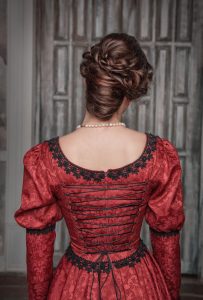 Sure, today we look at paintings and portraits from the Renaissance and Victorian Era and chuckle, but during those times, the crazy high hairdos and puffy dresses were all the rage. When it came to the Victorian Era, which was the early- to mid-1800s, the ideal body type was fuller figured with round hips that were exaggerated by small waists cinched in with corsets. And a light, fair complexion was preferred.
Sure, today we look at paintings and portraits from the Renaissance and Victorian Era and chuckle, but during those times, the crazy high hairdos and puffy dresses were all the rage. When it came to the Victorian Era, which was the early- to mid-1800s, the ideal body type was fuller figured with round hips that were exaggerated by small waists cinched in with corsets. And a light, fair complexion was preferred.
Early 1900s
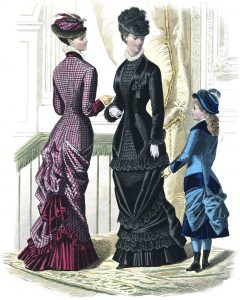 In the early 1900s in America, full-figured bodies with small waistlines were still very much in fashion. Women preferred wearing their hair up, which lent itself to one of this period’s trendiest fads—large, oversized hats. While dresses with extreme puffy shoulders from the 1700s and early 1800s were no longer in, women still covered virtually their entire bodies with huge skirts and dresses.
In the early 1900s in America, full-figured bodies with small waistlines were still very much in fashion. Women preferred wearing their hair up, which lent itself to one of this period’s trendiest fads—large, oversized hats. While dresses with extreme puffy shoulders from the 1700s and early 1800s were no longer in, women still covered virtually their entire bodies with huge skirts and dresses.
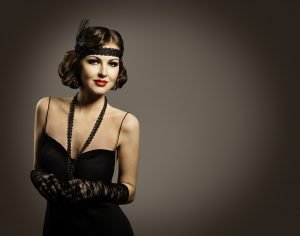 When the 1920s hit, the notion of beauty did a virtual 180-degree turn. No longer were big bosoms, big updos, cinched waistlines, and oversized dresses, skirts, and hats en vogue. This decade saw the birth of the flappers. Women during this decade opted to hide their curves in favor of a more slender figure, as well as the new, short “bobbed” hairstyle, and slinky, long dresses that showed more of their arms and legs.
When the 1920s hit, the notion of beauty did a virtual 180-degree turn. No longer were big bosoms, big updos, cinched waistlines, and oversized dresses, skirts, and hats en vogue. This decade saw the birth of the flappers. Women during this decade opted to hide their curves in favor of a more slender figure, as well as the new, short “bobbed” hairstyle, and slinky, long dresses that showed more of their arms and legs.
The ‘50s
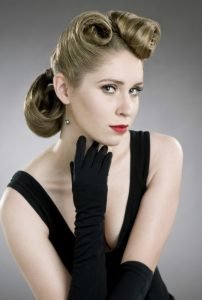 Coming out of the Great Depression and then World War II, the 1950s saw a resurgence of the voluptuous, hourglass figure championed by the likes of Marilyn Monroe. Women still preferred short hair, but often wore it with big, dramatic curls, and typically wouldn’t leave the house without being fully made up. A somewhat conservative decade, women opted for things like button-down sweaters and longer skirts.
Coming out of the Great Depression and then World War II, the 1950s saw a resurgence of the voluptuous, hourglass figure championed by the likes of Marilyn Monroe. Women still preferred short hair, but often wore it with big, dramatic curls, and typically wouldn’t leave the house without being fully made up. A somewhat conservative decade, women opted for things like button-down sweaters and longer skirts.
The ‘60s
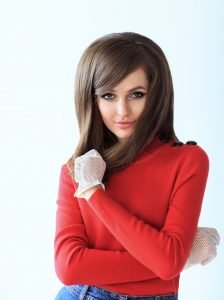 After the more conservative 1950s, women in the 1960s went back to a more slender and waifish look, demonstrated by the likes of Twiggy and Audrey Hepburn. Women wore heavy, dramatic makeup, hairstyles like the beehive that also made a statement, and knee-high boots with short skirts. The ‘60s also ushered in the “hippie” look, which featured all body types and a completely natural look with no makeup.
After the more conservative 1950s, women in the 1960s went back to a more slender and waifish look, demonstrated by the likes of Twiggy and Audrey Hepburn. Women wore heavy, dramatic makeup, hairstyles like the beehive that also made a statement, and knee-high boots with short skirts. The ‘60s also ushered in the “hippie” look, which featured all body types and a completely natural look with no makeup.
The ‘70s
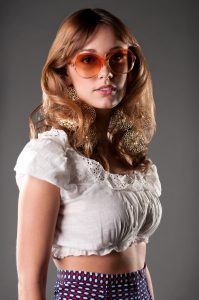 If people thought the ‘60s were presented a psychedelic perception of beauty, the 1970s would take that to a new level. Beauty and style in the ‘70s was characterized by thin figures and a sun-tanned complexion. Women opted for long, flowing hair made famous by Farrah Fawcett, and the fashion of the day included high-wasted jeans, mini skirts, bell bottoms, and high-heeled platform shoes.
If people thought the ‘60s were presented a psychedelic perception of beauty, the 1970s would take that to a new level. Beauty and style in the ‘70s was characterized by thin figures and a sun-tanned complexion. Women opted for long, flowing hair made famous by Farrah Fawcett, and the fashion of the day included high-wasted jeans, mini skirts, bell bottoms, and high-heeled platform shoes.
The ‘80s
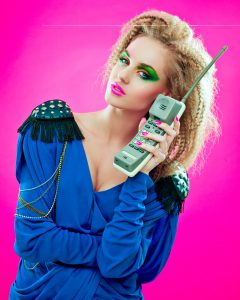 The thin body type from the ‘70s wasn’t entirely pushed aside in the 1980s, but that decade came with a more athletic, toned figure. Fashion choices were marked by things like spandex athletic wear in bright colors, and outfits that featured the notorious shoulder pads. The natural, flowing hairstyles were ditched for tall bangs and side “wings” that required plenty of hairspray. And makeup was worn in high doses with bright colors and lots of contrast.
The thin body type from the ‘70s wasn’t entirely pushed aside in the 1980s, but that decade came with a more athletic, toned figure. Fashion choices were marked by things like spandex athletic wear in bright colors, and outfits that featured the notorious shoulder pads. The natural, flowing hairstyles were ditched for tall bangs and side “wings” that required plenty of hairspray. And makeup was worn in high doses with bright colors and lots of contrast.
The ‘90s
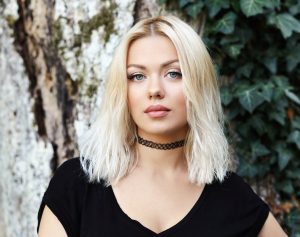 The extreme color combinations, tall hair, and heavy makeup from the ‘80s were abandoned in the ‘90s. Women fell into two categories: those who preferred an athletic figure, a more natural approach to makeup, and things like crop-tops; and others who chose the grunge look, characterized by a very thin figure, minimal hairstyling, makeup limited to heavy eyeliner, and baggy clothing.
The extreme color combinations, tall hair, and heavy makeup from the ‘80s were abandoned in the ‘90s. Women fell into two categories: those who preferred an athletic figure, a more natural approach to makeup, and things like crop-tops; and others who chose the grunge look, characterized by a very thin figure, minimal hairstyling, makeup limited to heavy eyeliner, and baggy clothing.
Today
 The early 2000s through today has seen a turn back to a healthy, fit body type. Women strive for a “healthy,” thin figure, but they are embracing their curves more and more, following the lead of celebrities like Kim Kardashian and Jennifer Lopez.
The early 2000s through today has seen a turn back to a healthy, fit body type. Women strive for a “healthy,” thin figure, but they are embracing their curves more and more, following the lead of celebrities like Kim Kardashian and Jennifer Lopez.




